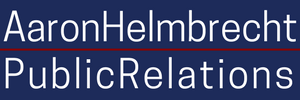Case study: We’ve got workflow problems and a system failure. What do we do?
Aaron Helmbrecht, Communications Strategist
ClientU.S. Department of Veterans Affairs (VA), Office of Information and Technology SituationThe client operates an IT tips and tricks blog for VA employees on their internal intranet. Content delivery for the client’s blog has ground to a halt. I am sent to investigate. ActionsWe’ve got workflow problems and a system failure. What do we do? The client’s complete workflow record is recorded in project management software like Microsoft Teams. We want to examine the workflow record like a mechanic. We’re looking for system weaknesses, inefficiencies, and vulnerabilities. You don’t want to sugar coat the problems. Then you get sugar-coated solutions. Sugar-coated solutions don’t win the game. We also want to identify the point of failure. Not so we can assign blame to someone. We want to figure out why the system failed and what we need to do to make sure that doesn't happen again. I discover the following message in the workflow record from a senior communications specialist who we will call Shelia, the newly hired managing editor of the blog.
The red flag of workflow inefficiency in the message is that I don’t know what it means. I speak to Sheila for clarification about her message. What are “newer” ways to use OneDrive? Her response is truly remarkable. It turns out Shelia is tech illiterate. She is operating under the assumption that all technology evolves in material and newsworthy ways if the time between two events is greater than a few years. How can a tech illiterate communications specialist manage an IT blog? Shelia is using a Lowest Common Denominator (LCD) strategy for the blog. An LCD strategy appeals to the largest possible audience by writing the most relatable content. The most relatable content has the least technical or specialized information. Shelia believes that if she can bring the blog’s level of technical information down to near zero, then she can make modern technology accessible to everyone, including computer novices like her. The LCD strategy has limitations in science and technology. The conventional wisdom is that everything should be made as simple as possible, but not simpler. If you oversimplify technical information, then the information becomes meaningless. Whenever technical information is too complex for Sheila’s understanding, she will change the copy to something simpler, but also false. What is in plain language from Sheila’s perspective is nonsensical to the audience. This is the point of failure preventing blog copy from passing the editorial review stage and advancing to the design and publication stage. ResultsShelia is an experienced communications specialist, but she is unqualified to manage an IT blog. My recommendation to the client is to reassign Shelia to a project that does not require technical knowledge. |

